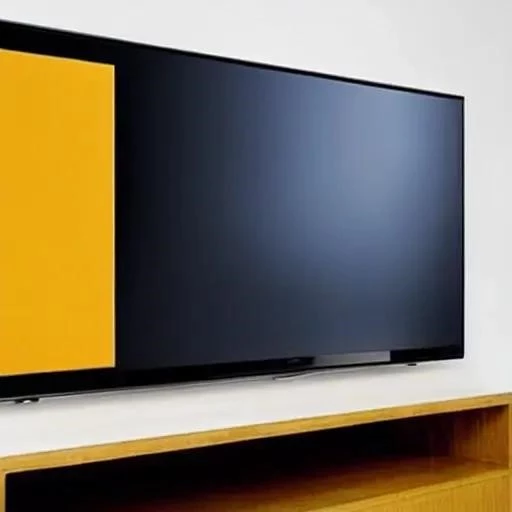In an era dominated by instant gratification and endless digital streams, the venerable television aerial often feels like a relic from a bygone age. We’re living through a transformative period where our entertainment consumption habits are constantly evolving, driven by the remarkable capabilities of Smart TVs. These intelligent devices, brimming with integrated internet connectivity and a vast universe of applications, promise a future where content is delivered on demand, tailored precisely to our preferences. Yet, a persistent question lingers for many consumers, hovering like a ghost from television’s past: is that old-fashioned TV aerial still a necessary component for today’s sophisticated Smart TV setup?
The answer, as with many aspects of modern technology, is nuanced, reflecting a fascinating intersection of traditional broadcasting and the burgeoning digital landscape. While Smart TVs are undeniably engineered for the internet age, seamlessly accessing platforms like Netflix, Hulu, Disney+, and YouTube with just a few clicks, their fundamental architecture often retains the capacity for conventional signal reception. This duality presents consumers with an unprecedented level of choice, allowing them to craft a viewing experience that perfectly aligns with their specific needs and desires. Understanding this evolving ecosystem is crucial for anyone navigating the vibrant, often complex, world of contemporary home entertainment.
Understanding Your Smart TV & The Aerial’s Role
To illuminate this topic further, here’s a concise overview of Smart TVs and the various scenarios concerning TV aerials.
| Category | Description/Relevance |
|---|---|
| What is a Smart TV? | A television with integrated internet connectivity, allowing access to streaming services, web browsing, and various applications without needing external devices. Essentially, a computer built into your TV. |
| What is a TV Aerial? | An antenna designed to receive over-the-air broadcast television signals (e.g., Freeview in the UK, ATSC in North America). It’s a physical conduit for traditional, terrestrial TV channels. |
| When is an Aerial Needed? | Primarily for receiving free-to-air broadcast channels (local news, sports, public service channels) that are not available via your chosen streaming platforms or if you prefer traditional channel surfing. Many Smart TVs still have built-in tuners for this purpose. |
| When is an Aerial NOT Needed? | If your primary method of content consumption is exclusively through internet-based streaming services (Netflix, Disney+, YouTube, Amazon Prime Video, etc.) and you have no interest in traditional broadcast channels. |
| Benefits of Streaming | On-demand content, vast libraries, personalized recommendations, often ad-free or with limited ads, accessible across multiple devices. |
| Benefits of Free-to-Air Broadcasts | No subscription fees, access to local news and events, reliable during internet outages, sometimes better picture quality for live sports without streaming latency. |
| Reference Link | CNET: What is a Smart TV? |
The Enduring Relevance of Terrestrial Broadcasts
Despite the undeniable allure of streaming, the TV aerial retains a surprisingly robust and incredibly practical role for many households. Consider the vast array of free-to-air channels available in regions like the UK (Freeview) or the comprehensive over-the-air digital broadcasts in the United States (ATSC). These services provide essential programming—from vital local news and community events to live sports and classic cinema—all without a monthly subscription fee. For families seeking cost-effective entertainment or those who simply prefer the traditional experience of channel surfing, an aerial remains an indispensable gateway. Moreover, in times of internet disruption, a reliable aerial ensures continued access to critical information and entertainment, offering a vital redundancy that streaming cannot match. This foundational access, often delivering pristine picture quality for major live events, is a compelling argument for its continued presence.
The Liberating Power of Pure Streaming
Conversely, for a growing segment of the population, the notion of an aerial feels utterly superfluous. This group, often dubbed “cord-cutters,” has fully embraced the paradigm of internet-delivered content. Their Smart TVs are primarily portals to an expansive universe of streaming services, where every movie, series, and documentary is available at their fingertips, paused and resumed at will. The absence of an aerial simplifies installation, reduces cable clutter, and aligns perfectly with a lifestyle centered on personalized, on-demand viewing. If your entertainment diet consists solely of Netflix Originals, Disney+ blockbusters, or YouTube documentaries, then the physical aerial connector on the back of your Smart TV might as well be an antique. This shift represents a powerful declaration of autonomy, with consumers curating their own bespoke entertainment packages, entirely unburdened by broadcast schedules or traditional channel lineups.
Crafting Your Ideal Viewing Experience
Ultimately, the decision of whether to connect a TV aerial to your Smart TV is a deeply personal one, reflecting your unique viewing habits and priorities. The beauty of today’s technology lies in its inherent flexibility. You can opt for a hybrid approach, seamlessly integrating free-to-air broadcasts for local content and breaking news with your favorite streaming subscriptions for an unparalleled entertainment smorgasbord. This fusion, expertly combining the best of both worlds, offers a truly comprehensive viewing solution; The modern Smart TV, far from being a one-dimensional device, stands as a versatile hub, capable of adapting to almost any content consumption strategy imaginable. By intelligently leveraging its capabilities, consumers are empowered to design a home entertainment system that is both forward-looking and deeply personal, ensuring every viewing session is exactly what they desire. The future of television is not about choosing one path over another, but about embracing the incredible freedom to forge your own.

